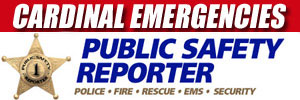From the slick roads to the abundant snow, winter driving poses various threats. But there is a way you can be prepared once the heavy snowfall and cold temps hit. Check out these essential car safety features for the winter to get yourself ready for whatever you encounter on the road.
Four-Wheel Drive
The road conditions tend to get sloppy in the winter, what with all the snow and ice. Four-wheel drive is a great feature that will help you drive in the bad weather. It will give your car the traction it needs to overcome snow and ice, especially when driving uphill. Most importantly, this feature will allow you to avoid getting stuck when conditions are bad.
Heat
Perhaps the most essential car safety feature for the winter is working heat. Not only will the heat keep you warm when the temperatures are chilling, but it will also defrost your car’s windshield. This is critical, because if it freezes, you will not be able to see out of it.
Working Brakes
Brakes are essential year-round, but they are even more important during the winter months. Not having properly working brakes can result in an accident, which is why you should get them inspected before a major storm hits. When using brakes in an older model car without ABS (antilock braking system) in the winter, pump them rather than slamming them, so your car comes to a complete stop on slick surfaces.
If your vehicle is equipped with ABS, you don’t need to pump the brakes when driving on slippery roads because the braking system automatically “pumps” the brakes for you.
ABS automatically pulsates or “pumps” the brakes as soon as the system detects a wheel skidding. Just firmly press your foot on the brake pedal and maintain steady pressure. You’ll feel the brake pedal pulsate, you’ll will hear an intermittent noise while the brakes “pump” automatically, and the ABS light will flash on the instrument panel.
ABS was common in vehicles in the late 1990s, and the National Highway Traffic Safety Administration (NHTSA) began a mandate of ABS on all new cars in 2013.
Windshield Wipers
Besides being able to defrost your windshield, you should also have windshield wipers that work properly. When snow begins to fall, windshield wipers will be helpful, because you will need to clean the snow from your windshield to see clearly. Be mindful of the wipers potentially freezing to the windshield. To circumvent this, get some de-icer or stand your wiper up while you’re not using your car.
Taillights
There is a good chance you will have to utilize your brakes frequently throughout the winter, and it’s common for your taillights to go out. Your taillights are essential for communicating with other drivers clearly when you are coming to a stop. Taillights are known to go out when it gets cold, so keep an eye on whether or not they are still functioning. You don’t want it to result in a ticket, either. It can be harder to see in the winter and it requires more time and room to brake. Fully functioning taillights will keep you — and motorists following you — much safer in the winter.
facebook …
GET ALERTS on Facebook.com/CardinalEmergencies
GET ALERTS on Facebook.com/ArlingtonCardinal
Stay informed with news from PublicSafetyReporter.com’s Emergencies Behind the Scenes Facebook page — Facebook.com/CardinalEmergencies.

